A symbol of Filipino Christmas: Looking back at the history of Parol

Our traditions for celebrating Christmas indeed have significance together with its historic value. Filipino Christmas celebrations are vibrant, vivacious, stuffed with customs, cheery, and undeniably dazzling. One of the causes is the Christmas lantern, also known as parol, which is the most iconic symbol of the Filipino Christmas spirit. Usually displayed outside of homes, along busy city streets, in tiny villages, and in provincial towns are these star-shaped lanterns.
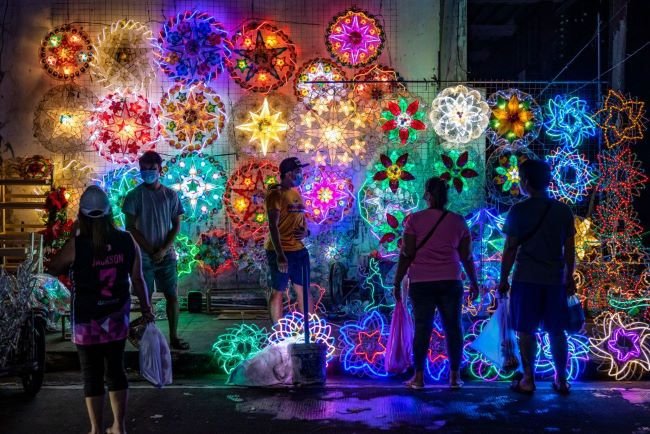
It is a representation of a unifying faith and hope. It also represents people’s unified celebration of kindness throughout the Christmas season and represents the triumph of light over darkness. Likewise, encouragement and hope can be present to Filipinos throughout this pandemic by lighting parols and hanging Christmas ornaments. Let’s take a look at how parol evolved into the distinctive Filipino Christmas symbol it is today.
Reminiscing the history of parol
Spanish Times
When the Spanish colonized the Philippines and introduced Christianity to the region, the parol first appeared then. The Spanish term “farol,” which means lantern, is now spelled “paról” in Filipino. However, the parol served as more than just decoration during the Spanish era.
Our ancestors put a parol outside their windows when we celebrated our Simbang Gabi during the Spanish era because the town priest would knock on every door from one end of the village to the church. As we know from the 9-day novena masses, which reflect the nine months Jesus Christ spent in Mary’s womb, the parol represents that people’s home is open and prepared to receive Jesus Christ. Additionally, it signifies that they are awake and prepared to join the procession to the church.

Photo Credits: ABS-CBN News
This metaphor is closer to the Star of Bethlehem because the folks walking carry bamboo along with the parol to light their path. Moreover, the Panunulyan procession recreates Joseph and Mary’s journey to Bethlehem in quest of a place to give birth to the baby Jesus. While carrying a parol, the performers portray Joseph and Mary as well as the residents of the town.
Later, these lanterns served as decorations after the parade, hanging outside homes. However, only for the Christmas Novena procession, the parol should be used. During other Novena processions in the Philippines, participants carry lit candles in their instead.
The design during the 1800s
White paper in plain rectangular or oblong shapes was used to make the first parols during the early Spanish era. Candles or lamps made of coconut oil lit them. Standardization of the parols’ shapes and placement used in Pampanga’s traditional Lubenas processions, which date back to the 1800s. A fish-shaped parol with hinged jaws (called the asan) representing Ichthys follows a cross-shaped parol at the front of the procession, which stands for Jesus. The andas (shoulder-borne palanquin) or carroza (wheeled chariot), which carries holy images, are behind them.
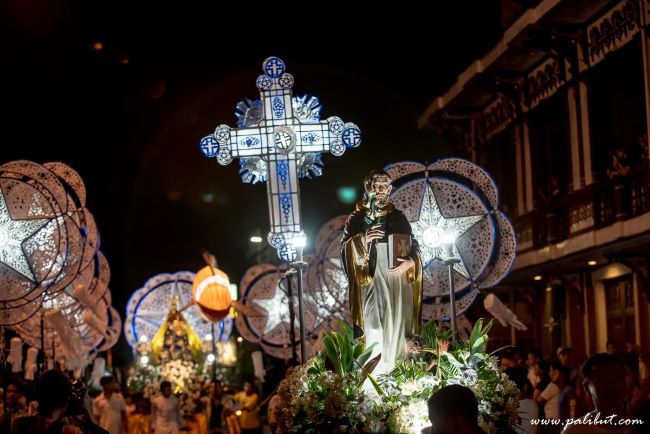
Photo Credits: Palibut.com
There are a total of twelve star-shaped parols, one for each of the twelve apostles, arranged in two rows on either side of the carriages. The giant, finely built lantern behind the carriage inspired the creation of the Giant Lantern Festival. This giant lantern can appear in any shape.
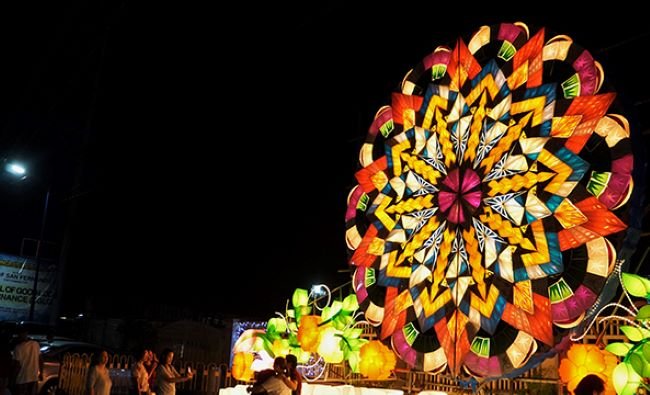
Photo Credits: Bong Lacson
By the 1830s, they had more varied colors and shapes, including elaborate fold-cut paper patterns. Since every lantern was handmade, each home had a unique design. Also, lamb-shaped parols symbolize the Lamb of God, and a dove symbolizes the Holy Spirit. Additionally, the parol’s shape resembles nativity scene animals moving close to parols in the shape of angels. However, they are hardly frequently used now.
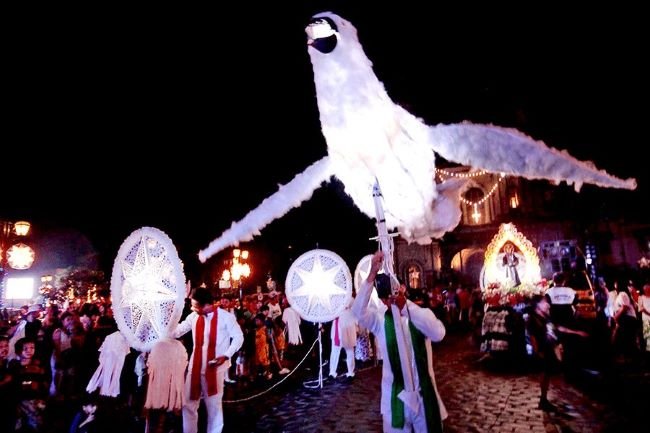
Photo Credits: Ronan Catanghal
The design from the 1900s until the present
Meanwhile, it took until the American colonial era for the parol to develop its typical five-pointed star shape. According to oral accounts, in 1908, a Pampanga craftsman called Francisco Estanislao created the first parol with a five-pointed star. He made his pattern out of bamboo strips covered with Japanese paper lit by a candle called a “kalburo” (carbide lamp).
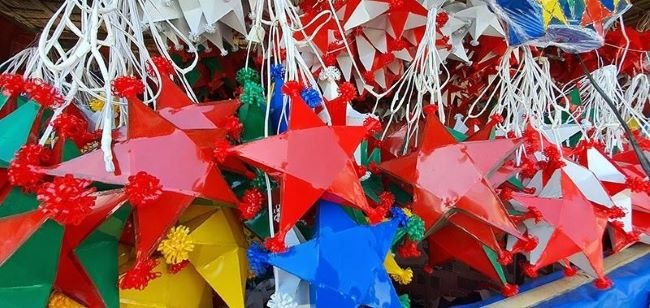
Photo Credits: SunStar Bacolod
With the introduction of electricity in Pampanga, light bulbs took the place of candles. Meanwhile, during the 1940s invented the first battery-powered lamps with incandescent bulbs.
Soon, dancing lights arrived; initially, several switches were used to manually control them. Eventually, the inventor of lanterns Rodolfo David created parols with rotor systems in 1957. The “rotor” is a device that made it possible for the lights to function as the designer had intended. To program the lighting and music, David used revolving steel drums with wires on hairpins. Introduced in 1964, this served as the model for the commercial electric parols known as Parul Sampernandu.
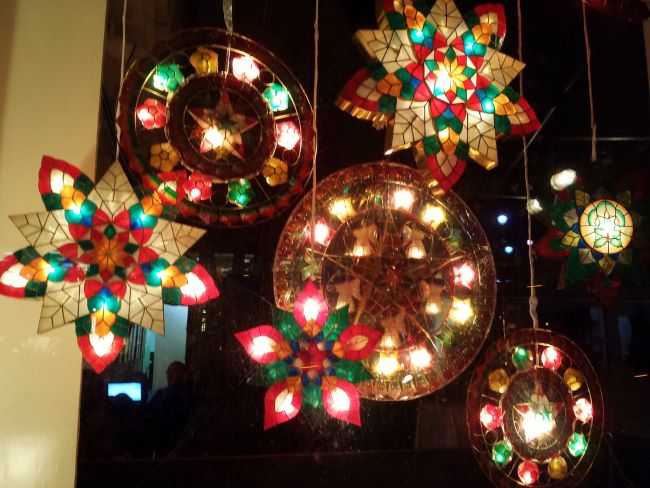
Photo Credits: gigi_nyc on flickr
The lantern changed over time into a more elaborate, elegant, and brilliantly lighted Christmas decoration. Along with the typical parol design, other materials like capiz shells with elaborate lighting also gained popularity. The lantern furthers the concept of parol by showcasing Filipino craftsmanship. Made of anything from shells to plastic to fiberglass, modern Christmas lantern possess eye-catching patterns and captivating light displays.
In the modern times
The parol continues to be associated with the Simbang Gabi ceremony as it was originally. To celebrate the Three Kings and their visit to the baby Jesus, it is kept until January and usually removed after Epiphany.
The Philippines, which has numerous festivals and parades including parols across the nation, is argued to be the Christmas Capital of Asia. The Ligligan Parul sometimes referred to as the Giant Lantern Festival, is the most well-known held in San Fernando City. Different barangays create lanterns as tall as 20 feet for this annual competition. The brass band playing in the background is used to “dance” these giant parols. Every year, the competition begins just before the first Simbang Gabi mass.
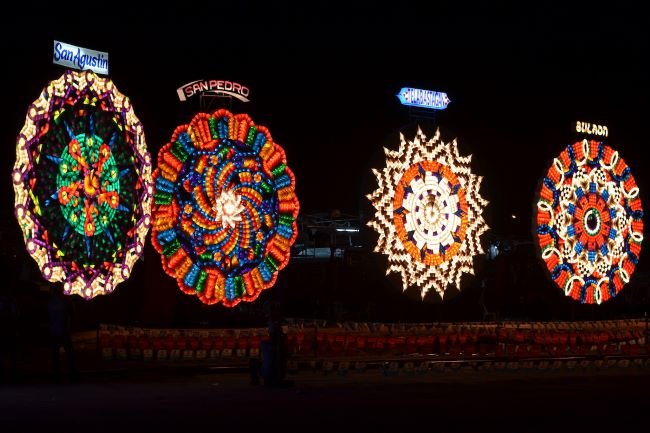
Photo Credits: Pau Gutierrez on Out of Town Blog
Lantern Parade at the University of the Philippines is arguably more well-known to those who reside in Manila. It departs from the standard San Fernando parol and instead includes floats of various shapes which are illuminated and exhibited all throughout the institution. The more conventional five-point star parol gains relevance thanks to Las Pinas’ own Parol Festival. As Miss Universe 2018 Catriona Gray displayed parol in her National Costume, parol even gained attention on an international stage.

Screengrab from Miss Universe on YouTube
With this in mind
The parol has come to be recognized as a symbol of Filipino Christmas. It serves the same purpose for Filipinos that the Christmas tree does for cultures in the West. Given the parol, it is not surprising that the Christmas season is merry and bright in the Philippines. Christmas lanterns made by Filipinos are a tradition, a work of art, and a timeless symbol of the holiday. Even in the darkest times, Filipinos regard parol as a symbol of hope.
There has been a deep reason or symbolism for the parol’s existence throughout its rich heritage. It not only represents the birth of Jesus Christ but also the triumph of light over darkness, which is the actual meaning of Christmas. It also represents the Filipinos’ renowned creativity. That is why you should hang the most elegant, colorful, and stunning parol during the ‘ber’ months.






